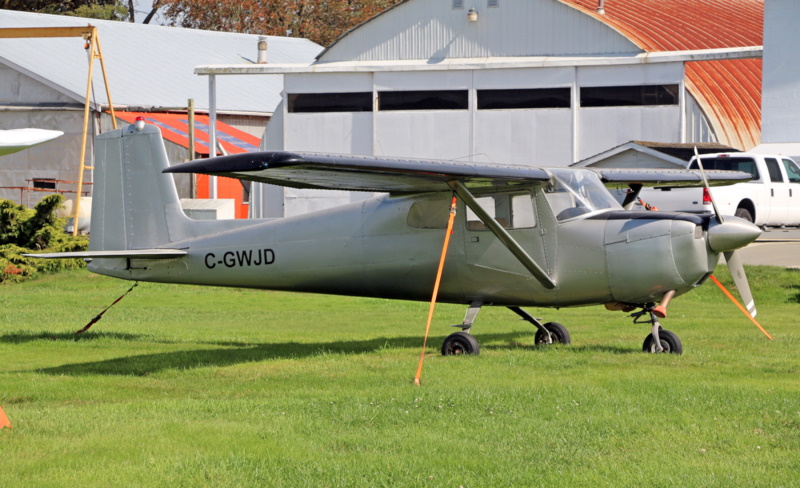Differences Unveiled: Cessna 150 Vs. Cessna 152
The Cessna 150 and Cessna 152 are similar aircraft, but differ primarily in their engines and performance capabilities. The Cessna 150 is equipped with a 100 horsepower Continental O-200 engine, while the Cessna 152 features a more powerful 110 horsepower Lycoming O-235 engine.
This additional power enables the Cessna 152 to achieve better climb and cruise performance compared to the Cessna 150. Despite their differences, both aircraft share a common airframe design and are popular choices for flight training and personal use. Their compact size and straightforward handling make them suitable for pilots at various skill levels.
Let’s explore these aircraft further and delve into their specific characteristics and differences.

Credit: www.airvectors.net
Exterior Design Variations
The differences between the Cessna 150 and Cessna 152 are noticeable in their exterior design. Starting with the wing design, there are variations between the two planes. The Cessna 150 has a straight wing, while the Cessna 152 boasts a more aerodynamic swept-back design.
Moving to the tail, the Cessna 150 features a conventional tail, whereas the Cessna 152 incorporates a T-tail configuration. When it comes to the fuselage design, there are minor changes to accommodate the increased engine power in the Cessna 152.
These variations in exterior design are important factors to consider when choosing between the Cessna 150 and Cessna 152. Both planes offer unique features for different flying requirements, making them popular choices among pilots.
Cockpit Layout Variations
The Cessna 150 and Cessna 152 have differences in their cockpit layout, specifically the instrument panel and control placement. The instrument panels in these aircraft exhibit variations in the arrangement of gauges, switches, and indicators. Each aircraft has its unique configuration, allowing pilots to better understand and monitor flight data.
Additionally, control placement plays a crucial role in the pilot’s accessibility and ease of operation. The positioning of control elements, such as throttle, mixture, and carburetor heat, may differ between the Cessna 150 and Cessna 152 models. Familiarizing oneself with these differences is crucial for pilots transitioning between the two aircraft, ensuring a smooth and safe flight experience.
Understanding the cockpit layout variations and instrument panel differences is essential for proficient operation and efficient utilization of these popular Cessna models.
Engine Specifications
The Cessna 150 and Cessna 152 differ in their engine specifications. The Cessna 150 has a horsepower variation while the Cessna 152 has different fuel consumption variances. These variations impact the performance and efficiency of the two aircraft models. The horsepower variation affects the power output and speed capabilities of the aircraft.
The Cessna 152 is known to have a slightly higher horsepower rating compared to the Cessna 150. On the other hand, fuel consumption variances determine how much fuel each aircraft model consumes during flight. These variations can affect the range and overall operating costs of the aircraft.
Pilots must consider these differences when choosing between the Cessna 150 and Cessna 152 for their specific needs and requirements.
Speed And Range Distinctions
The Cessna 150 and Cessna 152 exhibit certain key differences when it comes to speed and range. In terms of maximum speed, the Cessna 152 surpasses its predecessor, reaching a higher velocity. On the other hand, regarding range capacity, the Cessna 150 displays a greater ability to cover distances compared to the Cessna 152.
These variances make the Cessna 152 more suitable for short-distance flights and training purposes, while the Cessna 150 is better equipped for longer trips. Depending on the specific needs of the pilot, the choice between these two aircraft models will depend on the emphasis placed on speed versus range.
Ultimately, these distinctions provide individuals with options that cater to their desired flying requirements.
Takeoff And Landing Characteristics
The Cessna 150 and Cessna 152 have notable differences in their takeoff and landing characteristics. One of these disparities lies in the takeoff distance. Due to its lighter weight, the Cessna 150 typically requires a shorter takeoff distance compared to the Cessna 152.
This means that the Cessna 152 may need more runway to become airborne. Another area where these aircraft differ is in their landing approach variations. The Cessna 152 has a steeper approach angle, requiring a slightly different technique during landing compared to the Cessna 150.
Pilots of each aircraft must adapt to these specific characteristics in order to ensure safe and successful takeoffs and landings.
Flight Characteristics
The Cessna 150 and Cessna 152 have distinct flight characteristics that set them apart. One major difference lies in their control responsiveness. The Cessna 152 offers a more responsive feel, with quicker reaction times to pilot input. On the other hand, the Cessna 150 has a slightly sluggish response, giving pilots a more gentle and stable experience.
Another variation between the two aircraft is stability. The Cessna 150 is known for its inherent stability, making it easier for novice pilots to learn and handle. In contrast, the Cessna 152 may exhibit slightly less stability, requiring more attention and input from the pilot to maintain a desired flight path.
Overall, both aircraft have their advantages and differences when it comes to flight characteristics. These distinctions should be considered when choosing between the Cessna 150 and Cessna 152 for your flying needs.
Maneuverability
The Cessna 150 and Cessna 152 differ in terms of maneuverability. Regarding turning radius, the Cessna 152 has a smaller turning radius compared to the Cessna 150. This means that the Cessna 152 can make tighter turns, making it more maneuverable in crowded airspaces or short runways.
On the other hand, both aircraft have similar climbing and descending capabilities. They both have a maximum climb rate of around 715 feet per minute and can descend at a rate of about 590 feet per minute. This allows for smooth ascent and descent during flights.
Therefore, while the turning radius sets the two aircraft apart in terms of maneuverability, their climbing and descending capabilities remain relatively similar.
Pilot Workload
The Cessna 150 and Cessna 152 differ significantly in terms of pilot workload. The Cessna 152 is known for its ease of operation, providing a more straightforward and intuitive flying experience. Unlike its predecessor, the Cessna 150, the 152 features a redesigned control panel with simplified instruments and gauges, making it easier for pilots to navigate and monitor the aircraft’s performance.
This streamlined design reduces the cognitive load on pilots, allowing them to focus more on flying and enhancing overall flight experience. With its user-friendly nature, the Cessna 152 proves to be a popular choice for aspiring pilots and flight schools, as it can help novices build confidence in their flying abilities while ensuring a smooth and enjoyable flight.
Frequently Asked Questions Of Differences Between The Cessna 150 And Cessna 152
What Are The Main Differences Between The Cessna 150 And Cessna 152?
The main differences between the Cessna 150 and Cessna 152 include their engine power, weight, and fuel capacity. The Cessna 150 has a 100 horsepower engine, weighs around 1,500 pounds, and can carry up to 34 gallons of fuel. On the other hand, the Cessna 152 has a 110 horsepower engine, weighs around 1,670 pounds, and can carry up to 39 gallons of fuel.
How Do The Cessna 150 And Cessna 152 Differ In Terms Of Performance?
In terms of performance, the Cessna 152 generally has a slight advantage over the Cessna 150. The Cessna 152 has a higher climb rate, cruising speed, and range compared to the Cessna 150. However, both aircraft are known for their reliability, stability, and ease of handling, making them popular choices for flight training.
Can The Cessna 150 And Cessna 152 Accommodate The Same Number Of Passengers?
Yes, both the Cessna 150 and Cessna 152 can accommodate the same number of passengers – typically two occupants (pilot and passenger). They have a similar seating configuration with two seats side by side.
Are There Any Notable Differences In The Cockpit Design Of The Cessna 150 And Cessna 152?
While the overall cockpit design of the Cessna 150 and Cessna 152 is quite similar, there are a few notable differences. The Cessna 152 features a more modern instrument panel design with upgraded avionics options, including GPS capabilities. Additionally, the Cessna 152 has optional wheel fairings, which can enhance its aerodynamic performance.
Conclusion
To sum up, the Cessna 150 and Cessna 152 are both popular aircrafts, widely used for various aviation activities. While the 150 offers flexibility and a lower operating cost, the 152 takes the lead with its enhanced performance and safety features.
The 150 is ideal for beginners, providing them with a comfortable and smooth flying experience, while the 152 appeals to those seeking more advanced training and maneuverability. Despite their differences, both aircrafts share similarities in terms of reliability, durability, and ease of maintenance.
Whether you are a student pilot, aviation enthusiast, or simply looking to explore the skies, both the Cessna 150 and Cessna 152 offer exceptional flight capabilities. So, whether you choose the legacy of the 150 or opt for the improvements of the 152, you can’t go wrong with these iconic aircrafts.
Happy flying!
